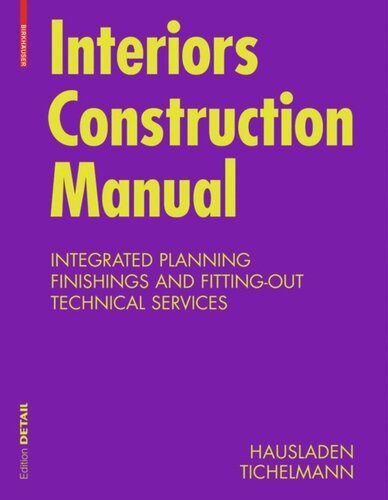

Most ebook files are in PDF format, so you can easily read them using various software such as Foxit Reader or directly on the Google Chrome browser.
Some ebook files are released by publishers in other formats such as .awz, .mobi, .epub, .fb2, etc. You may need to install specific software to read these formats on mobile/PC, such as Calibre.
Please read the tutorial at this link: https://ebookbell.com/faq
We offer FREE conversion to the popular formats you request; however, this may take some time. Therefore, right after payment, please email us, and we will try to provide the service as quickly as possible.
For some exceptional file formats or broken links (if any), please refrain from opening any disputes. Instead, email us first, and we will try to assist within a maximum of 6 hours.
EbookBell Team

5.0
18 reviewsAn indispensable planning manual for interior construction
Soccer stadiums, airports, theaters, museums – it falls to very few architects to tackle spectacular building tasks like these. The everyday work of most architects is more often focused on "manageable" projects like the renovation, remodeling, or rebuilding of single- and multi-family houses, schools, and offices. Whatever the nature of the building task, interior construction is always a significant design and qualitative challenge that calls for highly detailed technical expertise. After all, it affects the realm that will be brought to life and utilized by the user when the task is finished, and whose aesthetic and functional serviceability will be put to the test each and every day. The Interior Construction Manual supports planners in their daily work as a practical planning aid and reference work with the relevant standards, guidelines, reference details, and constructional solutions, all illustrated by built example projects. It brings together the crucial facts on all aspects of interior construction and presents the key fundamentals of building physics, fire protection, interior construction systems, and openings. In addition, it offers concrete tips on integrated planning approaches, energy and sustainability issues, materials used in interior construction, hazardous substances, and dealing with building services and light planning.